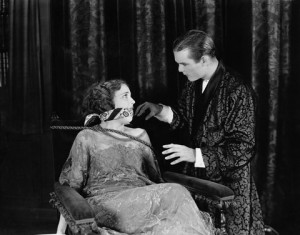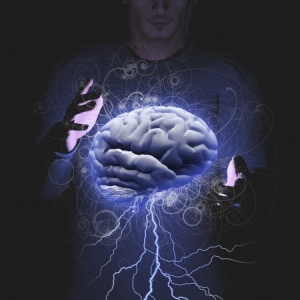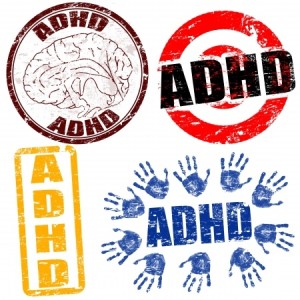Drugs, Violence and Revolution
The recent killings in Oregon at Umpqua Community College by Chris Harper Mercer have again brought the issue of violence and mental health into the news. But there is an element in the narrative that is often missing in media reports of the incidents. Many of the shooters, if not all, were taking psychiatric medications or had recently stopped taking their medications at the time of the shootings. The misdirection of the spin on these incidents has largely been to argue for increased gun control or to press for more screening for mental health problems and to increase forced treatment—meaning increased forced medication.
Writing for The New American in March of 2013, Rebecca Terrell (“Psychiatric Drugs: Prescription for Murder?”) noted ten examples of young people who were the perpetrators of mass school shootings and who had a history of taking psychotherapeutic drugs. Terrell described an incident in 2001 where a 16 year old held a high school class hostage at gunpoint in Washington State. No one was killed or hurt physically. But he has no memory of the incident. “In the morning I didn’t feel like going to school. I felt sick; didn’t feel like I could get up very well. So I went back to bed. And the next thing I remember I’m in juvie in the detention center where I used to live.” He received a reduced sentence because expert psychiatric testimony convinced the jury his crime was the result of adverse effects from Effexor and Paxil.
We can add Mercer to Terrell’s list. C. Mitchell Shaw and Peter Breggin noted that Mercer was taking several medications, including antidepressants. Shaw reported that Mercer’s mother had him admitted to a psych unit because he quit taking his medications. Breggin posted a screen shot of Mercer’s Facebook page where he said: “I have a pill bottle with like five types of pills mixed in. I don’t know which ones are the sleep aids, so I just took four of each.” Breggin said that the major news media surely had access to the information on Mercer’s website, “but universally has chosen to withhold it.”
Shaw acknowledged that anecdotes are not proof and most people who take antidepressants do not become violent. “The fact remains, though that young people are particularly at risk of developing violent tendencies, suicidal tendencies, or both while taking these drugs.”
Dr Breggin has been a medical expert in the case surrounding Eric Harris (one of the Columbine shooters) and James Holmes (the Aurora movie theatre shooter). He said that Harris was taking Luvox (fluvoxamine) for a year before the incident. This was before and during the period of his “growing manic-like violent state.” He also had a therapeutic level of Luvox in his system on autopsy. Holmes was prescribed Zoloft by his psychiatrist, whom he told he was having very violent feelings, but did not want to fully describe them to her.
Over 120 days, he became more violent on Zoloft and began elaborately planning the assault on the movie theater. He stopped taking the drug 20 days prior to the shootings, but by then he was grossly psychotic, again in a manic-like state.
Breggin, Shaw and Philip Hickey all noted a newly published study indicating a link between SSRIs and violence, “Selective Serotonin Reuptake Inhibitors and Violent Crime.” Hickey and Breggin also mentioned a study from 2010, “Prescription Drugs Associated with Reports of Violence towards Others.” The 2010 study looked at all the reports of violence reported to the FDA Adverse Event Reporting System (AERS). The other study, which was just published in September of 2015, is a retrospective study of 18 to 25-year-olds on SSRIs. Breggin said the implications of these two studies are enormous.
“Prescription Drugs Associated with Reports of Violence towards Others” showed that “serious acts of violence were regularly reported as an adverse drug event.” Chantix (varenicline), a smoking cessation medication, had the strongest association with violence. Antidepressants showed a consistently elevated risk of violence. See Table 1 in the study for data on drugs associated with violence. See Table 3 for data on the reported incidents of violence and adverse events for psychotropic drugs. The authors concluded:
These data provide new evidence that acts of violence towards others are a genuine and serious adverse drug event that is associated with a relatively small group of drugs. Varenicline, which increases the availability of dopamine, and serotonin reuptake inhibitors were the most strongly and consistently implicated drugs. Prospective studies to evaluate systematically this side effect are needed to establish the incidence, confirm differences among drugs and identify additional common features.
“Selective Serotonin Reuptake Inhibitors and Violent Crime” extracted information on SSRIs prescribed in Sweden between 2006 and 2009 from the Swedish Prescribed Drug Register and information’s on convictions for violent crimes for the same time period from the Swedish national crime register. Their findings showed an association between SSRIs and violent crime that varied by age group. This did not prove a causative relationship between SSRIs and violent crime among young people. Nevertheless, “the association between violent crimes and SSRIs among individuals younger than 25 years is worrying.”
There are two principal clinical implications arising from this study. First, no association between SSRIs and violent crime convictions was found for the majority of people who were prescribed these medications, including individuals aged 25 y and older. Second, the risk increase we report in young people is not insignificant, and hence warrants further examination. If our findings related to young people are validated in other designs, samples, and settings, warnings about an increased risk of violent behaviours while being treated with SSRIs may be needed.
In “Psychiatric Drugs and Violence,” Hickey observed that while both studies indicate a link between SSRIs and violence, they have limitations that make it difficult to draw firm conclusions. So further research is needed into the association. There is a petition on We the People asking to launch a federal investigation into the relationship between school shootings and psychiatric drugs. Hickey said that one of psychiatry’s most obvious vulnerabilities is how various antidepressants induce homicidal and suicidal feelings and actions in some individuals, especially late adolescents and young adults. “This fact is not in dispute, but psychiatry routinely downplays the risk, and insists that the benefits of these drugs outweigh any risks of actual violence that might exist.”
Amazingly, psychiatry has consistently failed to conduct a comprehensive, prospective, formal research study on this matter, even though the need for such a study has been glaringly evident for almost 20 years. It is very difficult to avoid the conclusion that psychiatry’s refusal to engage this question is motivated by a desire to suppress information, and to avoid the anti-psychiatry publicity that such a study will almost surely entail.
Perhaps psychiatry avoids research into the connection between violence and psychiatric medications to avoid the catastrophe of thousands or millions of individuals going off their psychiatric medications. The adverse effects of this could include an epidemic of self-harm or violence to others by mentally unstable individuals off their meds. So the paradox here is self-harm and violence is avoided by failing to investigate the connection between medication and violence. If this is the rationale of psychiatry, I think Thomas Kuhn’s idea of a paradigm shift in psychiatry applies.
In The Structure of Scientific Revolutions, Thomas Kuhn sees science as alternating between normal and revolutionary phases. Within periods of normal science, a paradigm provides the framework within which scientific work was conducted and evaluated. This view of science sees it as largely consensus-based around a reigning paradigm. Psychiatry fits this view of science to a “t.” Its heart is a consensus-based diagnostic system.
According to Kuhn, a paradigm is “the universally recognized scientific achievements that for a time provide model problems and solutions to a [scientific] community of practitioners.” (The Structure of Scientific Revolutions, viii) Normal science is largely “puzzle-solving” activity—figuring out how to apply the paradigm to new phenomena. “During periods of normal science the shared paradigm serves to define the relevant discipline, … to define what are legitimate scientific problems, to define what are acceptable solutions to problems, and to guide research into new lines of research.”
Occasionally, a result that is contrary to what the paradigm expects—an anomaly—occurs. Since biological psychiatry sees itself as scientific, evidence that medications contribute to violence and self-harm when they are supposed to lessen violence and self-harm is seen as an anomaly. Anomalies are either ignored or explained away if at all possible, according to Kuhn. When there are enough anomalies that defy resolution by the paradigm or when the anomaly involves something so central to the paradigm that it cannot be ignored, a crisis state develops. This is what I see happening to psychiatry. It is in this crisis stage.
If there is an acceptable alternative paradigm available, the new paradigm replaces the old one (a revolution occurs) and a new period of normal science begins with the new paradigm. Kuhn did not presume that a new paradigm would triumph over an older one because of its improved explanatory power. Rather like religion, “The transfer of allegiance from paradigm to paradigm is a conversion experience that cannot be forced.”
Kuhn’s thought it still helpful for anyone opposed to seeing psychiatry as scientific. In an essay he wrote in the early 1960s, “The Function of Measurement in Modern Physical Science,” Kuhn observed that the social sciences were largely in a pre–scientific stage. He said this was because most of the social sciences were still “characterized by fundamental disagreements about the definition of the field, its paradigm achievements, and its problems.” (The Essential Tension, 222) This lack of consensus still largely applies to psychiatry and indicates it is still within a pre-scientific stage. To name but a few of the disagreements, there are disputes over conceptualizing and defining “mental illness,” whether electro convulsive therapy is treatment or torture, and whether the wide-spread use of psychiatric medication been an achievement in treatment or has it caused an epidemic of mental illness.
The effort made by psychiatry to present a united front and to ignore its anomalies like the connection between violence and psychiatric medications indicates it has an entrenched view of what it does as scientific. So be it. Let’s not waste time trying to convince its thought leaders of their error. But let’s continue to present information to the consumers of psychiatry on its anomalies and bankrupt theories. If people no longer believe in psychiatry and its views of how to handle problems in living, it will either have to radically change or be toppled from its position of authority. Let’s work for both options. Long live the revolution.









